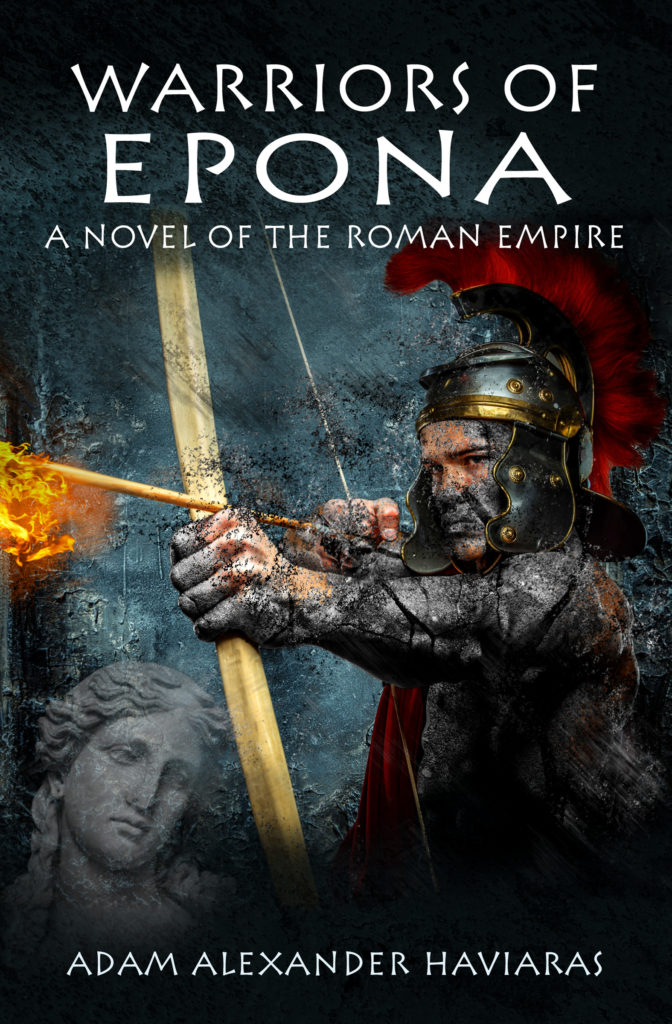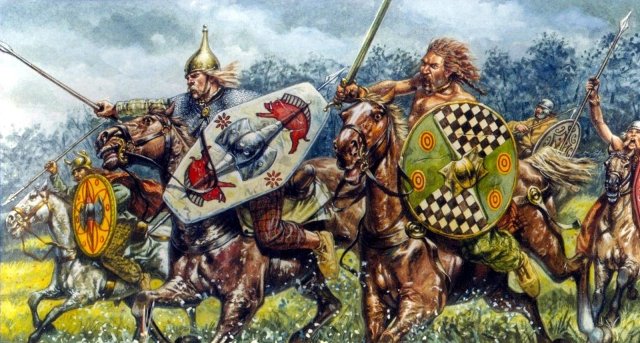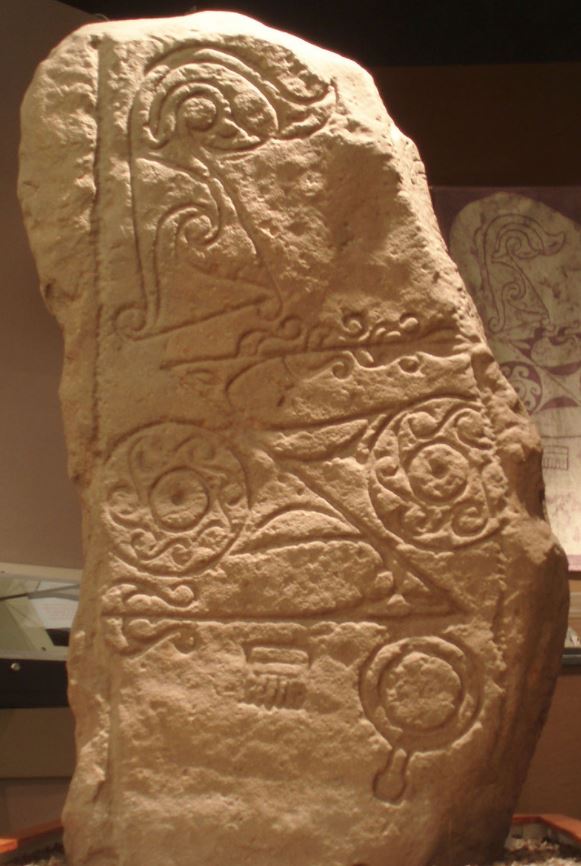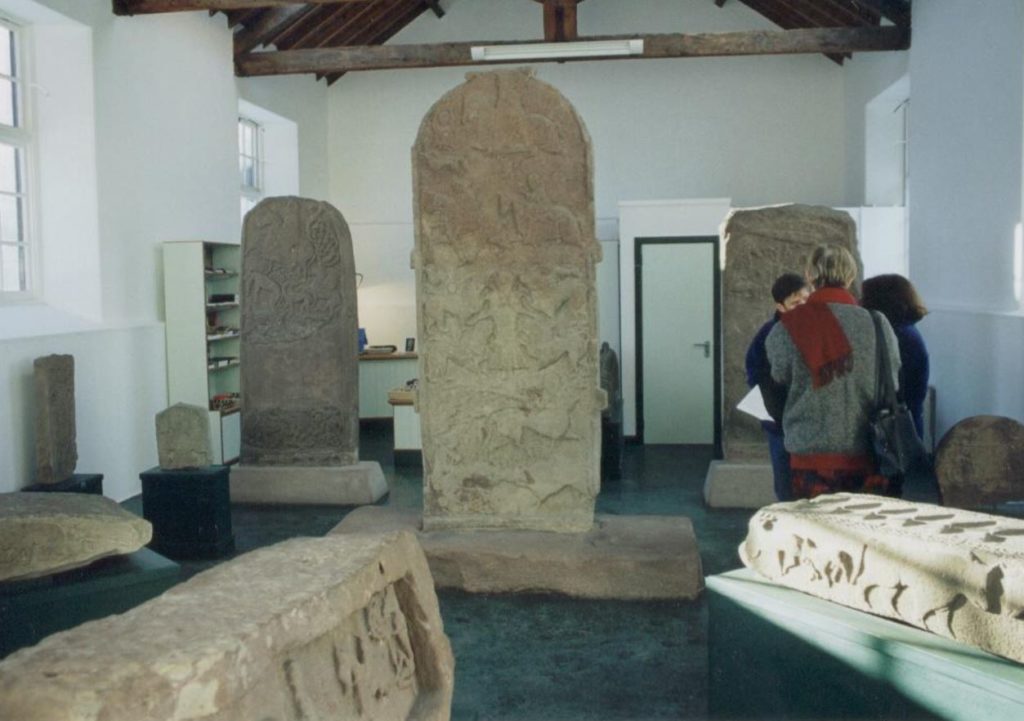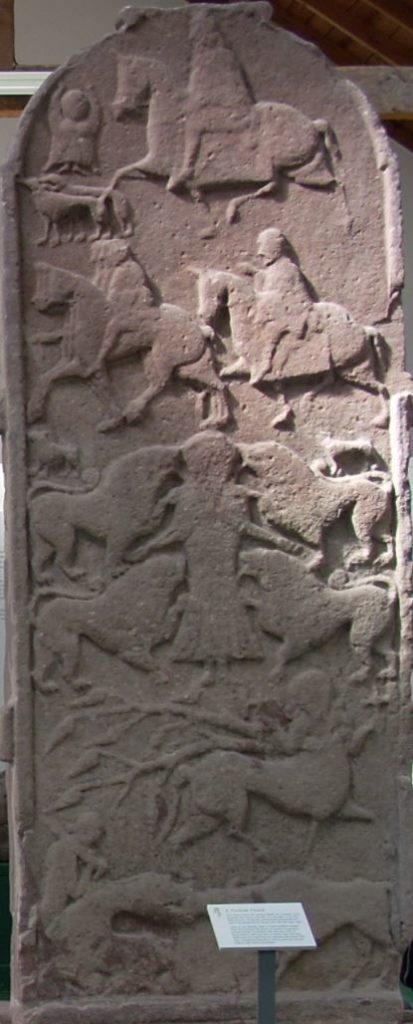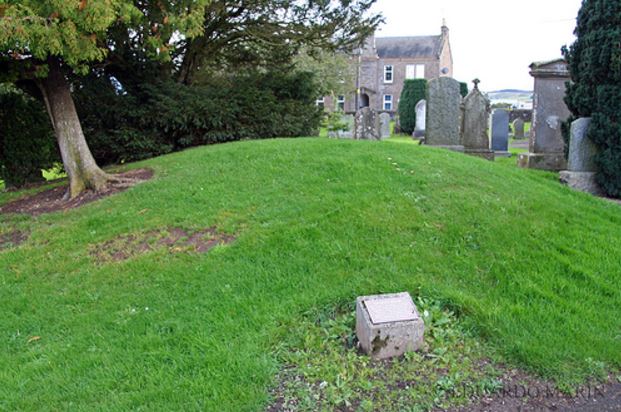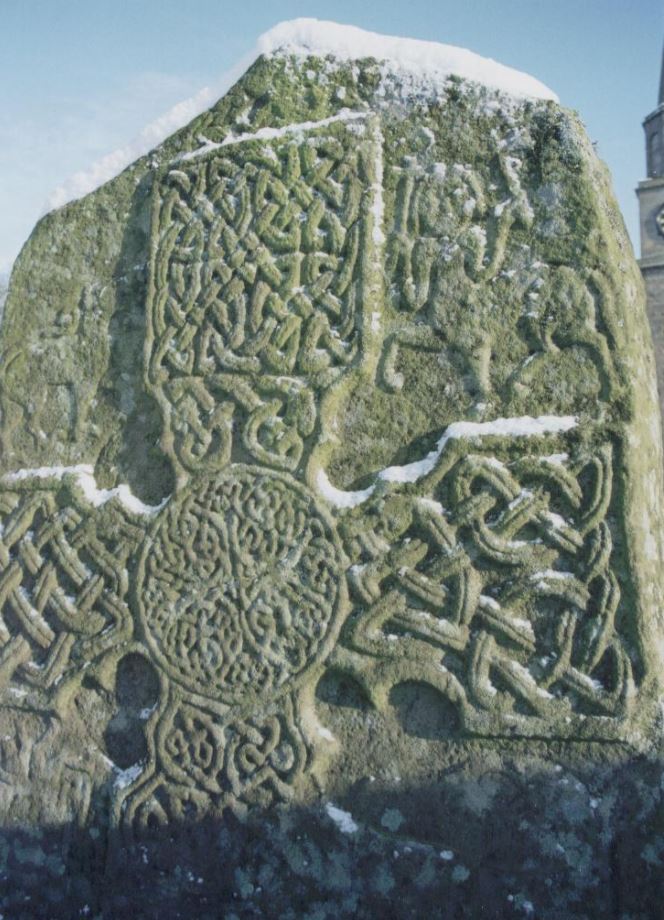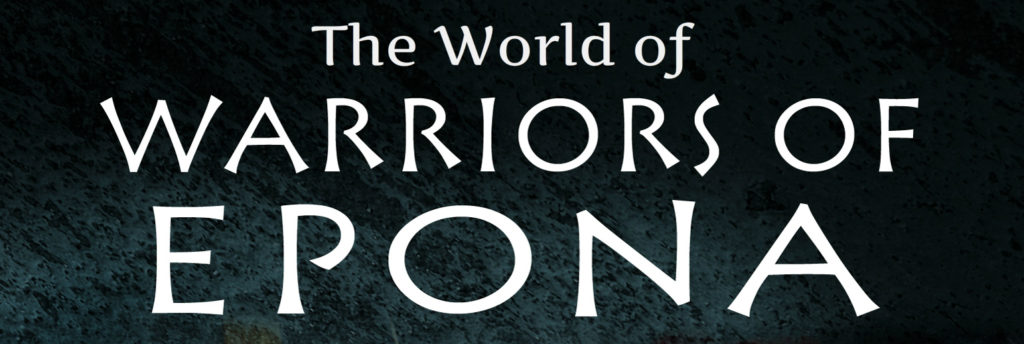Agricola
The World of Warriors of Epona – Part IV – Battle Line: The Gask Ridge Frontier
When most think of the Romans in Britannia or Caledonia, almost always the first thing that comes to mind is Hadrian’s Wall.
But there is another frontier that many people may not know of. You may have heard of some of the forts or camps that make up a part of this frontier, such as the legionary base at Inchtuthil.

Roman re-enactor watching the frontier
I’m talking about a line of forts and camps known as the ‘Gask Ridge’.
Research on this particular frontier has been less in depth than either the Antonine or Hadrianic walls. However, over the past ten years or so, the Gask Ridge has received its due attention thanks to the efforts of Birgitta Hoffmann and David Woolliscroft who have spearheaded the Roman Gask Project.
The importance of this frontier cannot be over-emphasized.
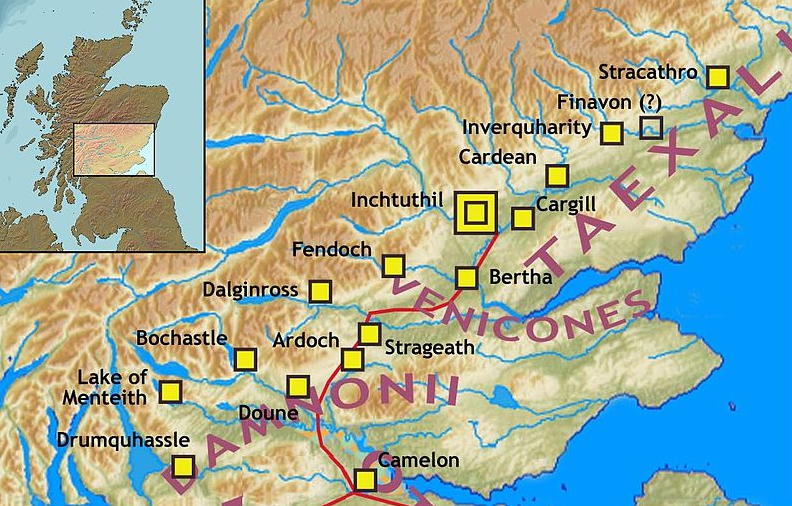
Gask Ridge Forts (Wikimedia Commons)
The Gask Ridge frontier has seen action in every one of Rome’s Caledonian campaigns and some of the research even shows that it was the first chain of forts in northern Britain, predating the other walls.
Some believe it is the first such frontier in the Empire!
It consists of a long line of forts, watchtowers, and temporary marching camps that run from the area of Stirling, on the Antonine Wall, past Doune, along the edge of Fife and up into Angus, all the way to Stracathro.
This is a very impressive line of defence built by Rome with the intent of holding the Caledonii at bay, and separating the highlands from the flatter plains leading to the North Sea.
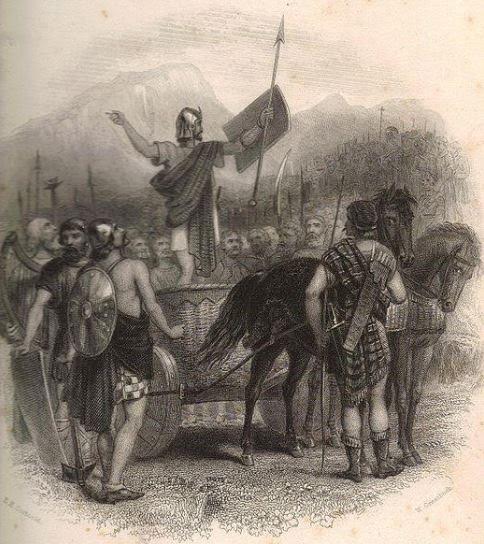
Artist Impression of Caledonian Warriors
In writing Warriors of Epona, the trick was finding out which forts may have been in use during the campaigns of Septimius Severus in the early 3rd century A.D.
The forts of the Gask Ridge were used mostly during Agricola’s campaign in the late first century, and then by Antoninus in the mid-second century.
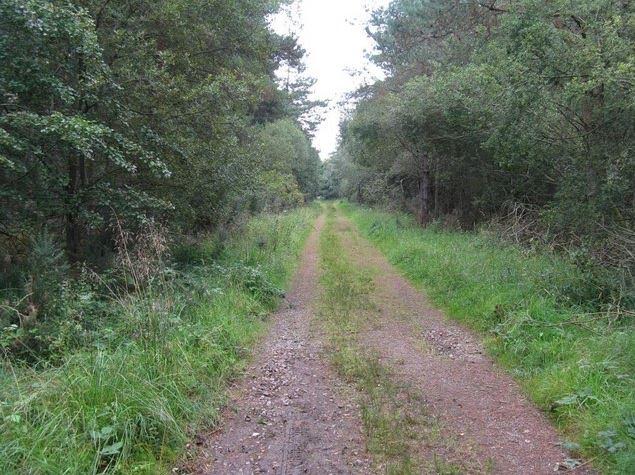
Roman road along Gask Ridge in Perth and Kinross
The Romans definitely knew how to pick a strategic location along the perfect line of march, so it’s likely marching camps would have been reused in later campaigns. But some of that is supposition.
One site that we know was built as part of the Severan campaign was the legionary fort at Carpow, on the banks of the Tay. With a large part of a legion stationed there, the supply chain could be maintained by sea with Roman galleys coming up the Tay. It was also at this time that some believe the first Tay Bridge was built when Severus ordered the creation of a boat or pontoon bridge to the Angus side of the river.
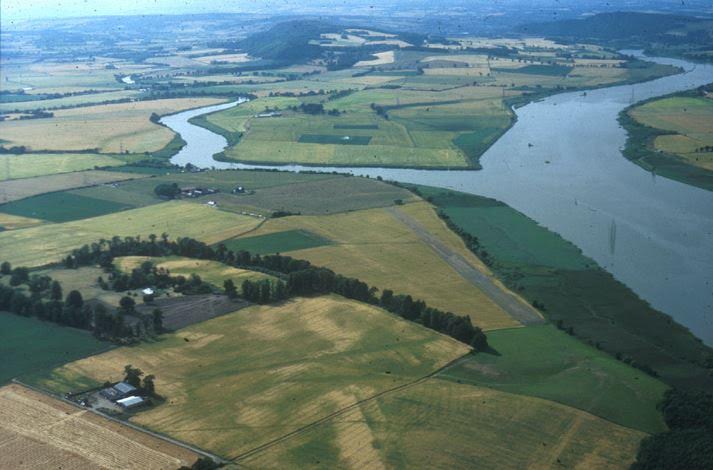
Aerial view of Horea Classis site (Carpow)
Carpow was a large base of operations intended to make a statement – Rome was going to stay this time! Severus was a military emperor who liked to prove his point. He was in Caledonia to finish what other Roman emperors had started, just as he did in Parthia.
The Gask Ridge plays a key role in Warriors of Epona, especially the forts that may have seen re-use during the third century, among them the forts at Camelon, Ardoch, Fendoch, and Bertha, the latter being where Lucius Metellus Anguis establishes his forward base.
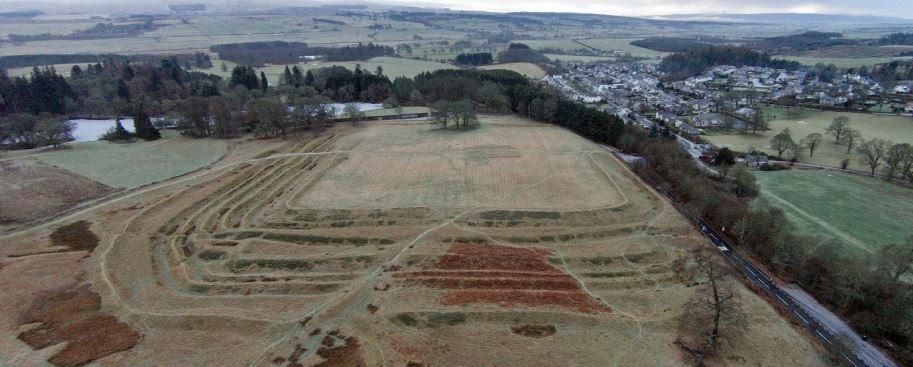
Ardoch Roman camp remains
Of course, one of the exciting things about writing historical fiction, after the research, is filling in the gaps and exploring possibilities.
Because research on the Gask Ridge is relatively new, we can certainly look forward to learning more from Hoffmann, Woolliscroft, and everyone else on the Roman Gask Project team who are leading the charge to further our knowledge of this ancient frontier.
One thing that I have discovered over the years is that even though the history and research are very important, at the end of the day, in fiction, the story must come first.
With Warriors of Epona, history and story have come together nicely, and that has been pure magic!
Cheers, and stay tuned for the fifth and final part of The World of Warriors of Epona.
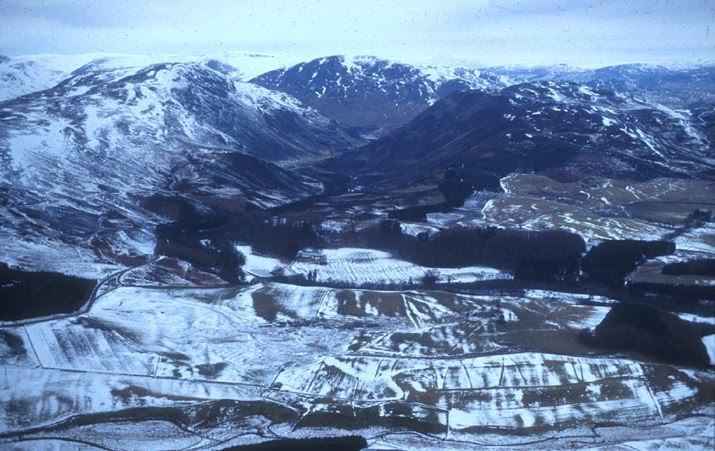
Aerial view of Fendoch and the Sma’ Glen from the south with the fort on the low plateau in the right foreground.
If you are interested in reading more about the Roman Gask Frontier, or about the Romans in Scotland, do have a look at the following resources:
The Roman Gask Project: http://www.theromangaskproject.org/
Rome’s First Frontier: The Flavian Occupation of Northern Scotland. By D. J. Woolliscroft and B. Hoffman. Pp. 254. ISBN: 0 7524 3044 0. Stroud: Tempus. 2006.
